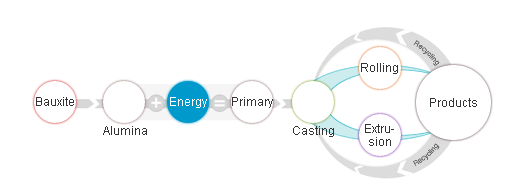Bauxite is a mixture of minerals that contain various concentrations of hydrated aluminum oxides, as well as impurities. The primary ore minerals are gibbsite (alumina tri-hydrate), boehmite and diaspore (alumina monohydrates).
Gibbsite-rich bauxite is preferred as it can be refined at lower digestion temperatures than the other types of alumina bearing minerals.
Bauxite is usually reddish-brown, but can also be white, tan, and yellow, depending on the type and concentration of iron minerals present. It also has a wide range of textures, but is typically dull to earthy in luster and can look like clay or soil.
Application areas
1、Alumina for metallurgical purposes
2、Abrasives
3、Cement
4、Chemical applications
Bauxite in the value chain
Further Information
What is bauxite?
1、It is an aluminium ore and the world's main source of aluminium.
2、Not a mineral itself, it is a rock comprised mostly of aluminium hydroxide, typically alongside small amounts of silica, iron oxide and other impurities.
3、It is used mostly to make aluminium but other uses include making sandpaper, polishing powders, and in hydraulic fracturing, or "fracking", gas and oil from shale rock.
4、There are plentiful reserves of it, which should allow hundreds of years' more use even before recycling is taken into account.
5、The top producers are Australia, China, Brazil and India.
6、Commonly found near the surface, it is typically strip-mined - a practice sometimes criticised for its environmental impact.
7、The subsequent production of aluminium involves electrolysis and is usually located in countries where electricity is cheap, such as Iceland.
| Item | Content | |
| Chemical Formula | Al(OH)3 with possible additional Al and (OH) | |
| Color | yellow, white, gray, brown, reddish-brown | |
| Crystal System | Amorphous | |
| Properties | Hardness | 1-3 |
| Transparency | Opaque | |
| Specific Gravity | 2.0-2.6 | |
| Luster | Dull | |
| Cleavage | None | |
| Fracture | Earthy | |
| Tenacity | Brittle | |
















